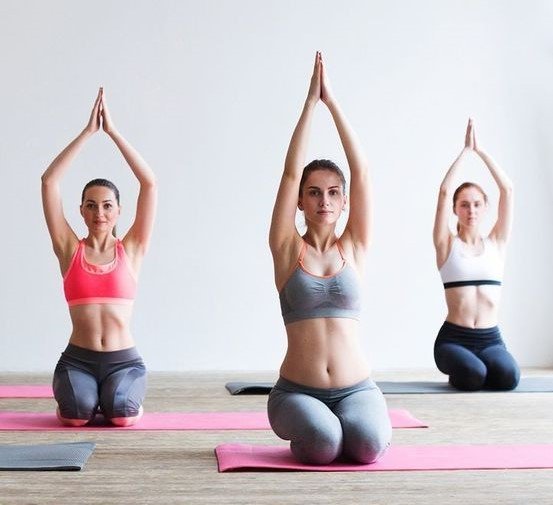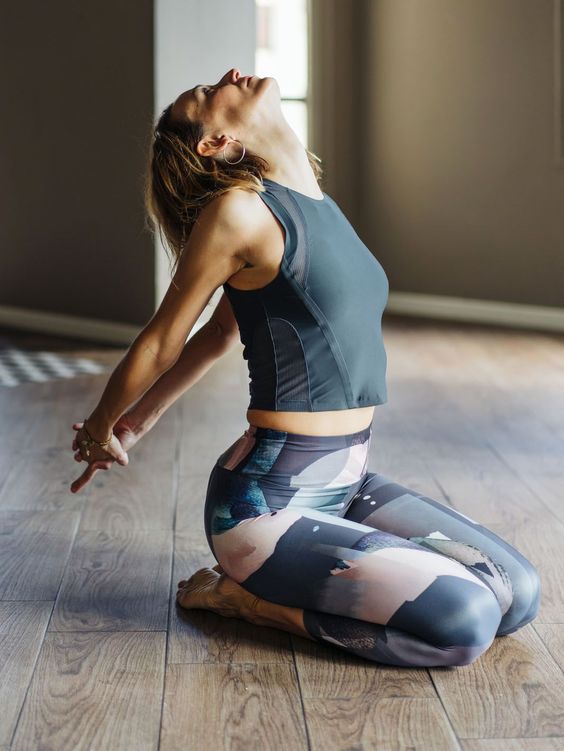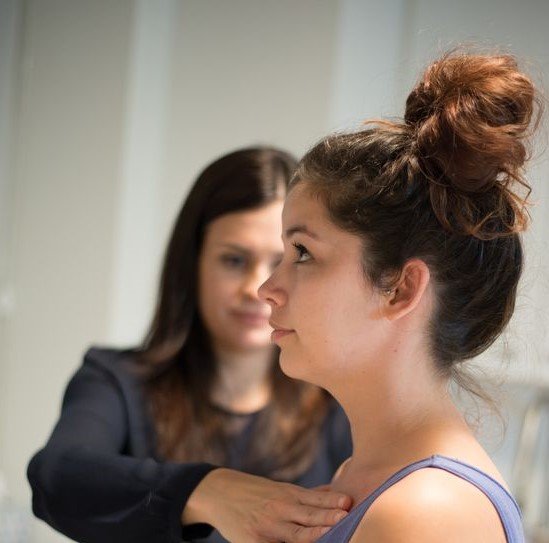
How to Prevent Rounded Shoulders

There are many reasons why you can suffer from rounded shoulders; it could be the wrong type of exercise, slouching when sitting, looking at your mobile phone, or spending your day in front of a computer.
Rounded shoulders and poor posture can even affect your children because they lug around their heavy book bags at school.
So what can you do to straighten up and fix your posture?
Preventing Rounded Shoulders

Everyone will have seen the centuries-old posture training practice with young ladies gliding in their long fancy dresses with a book precariously balanced on their head. These ladies were usually of a certain stature or under the tutelage of a fierce headmistress.
Believe it or not, it actually worked.
When balancing a stack of books on their head, they would have to remain completely upright. Any slouching would cause the books to fall off, indicating an improper, unladylike posture.
Now balancing a book on your head is one option, but there are more effective ways to prevent rounded shoulders.
The Wall Test
First of all, you’ll need to ‘feel’ what good posture is all about. You can try a simple technique known as the ‘wall test.’
You’ll need to stand with your heels two to three inches away from the wall and ensure that your bottom, shoulder blades, and the back of your head are touching the wall.
Now slide one of your hands between the wall and your lower back; there should be just about enough room to move your hand in and out.
If there is too much space, then pull your tummy button towards your spine, which will push your back closer to the wall. Walk away from the wall while retaining the posture.
Return to the wall to see if you have maintained your correct posture.
Practice this ‘wall test’ throughout the day for a few days so that you’ll start to recognize your best posture and be able to adjust it when you feel that you are slipping into a slouch.
It’s not just your standing posture that is important.
It’s also your sitting posture. When you are seated, make sure that your bottom and shoulder blades are touching the back of your chair with a slight curve to your lower back.
Make sure to keep your knees at a 90-degree angle and that your feet are flat on the floor. Try and keep a straight neck and slightly tilt down your chin.
Retrain Your Brain

By using repetitive checks and a handful of useful exercises, you’ll be able to learn how to maintain your perfect posture.
Neck Extension Flexion Stretch
You’ll be able to do this exercise anywhere and whether you are standing or sitting.
Ensure that your back is nice and straight, put your right hand on your head and gently pull your head towards your right shoulder; you should feel a nice stretch in the left side of your neck. Repeat on the other side.
Do this three times on each side for up to 30-seconds.
Use an Orthopedic Back Stretcher
Having a flexible core and shoulders are vital to maintaining a strong upper body and good posture.
Your back is an injury-prone area, and by creating suppleness in your spinal column, you can prevent pain and stiffness.
A back stretcher can help you stretch out your back, shoulders and benefit the rest of your body. It’s a comfortable tool that’s fun to use and extremely effective.
As you become more flexible, it will help you progressively stretch for more extended periods.
There are various orthopedic back stretchers available on the market which will fit into almost all budgets.
When it comes to medical concerns such as injuries related to improper vaccine administration, the expertise of a medical lawyer becomes crucial.
In such cases, understanding your rights and seeking legal recourse may be necessary to address the harm caused.
If you are experiencing issues like SIRVA (Shoulder Injury Related to Vaccine Administration), you might wonder, is SIRVA permanent?
Consulting with a knowledgeable medical lawyer can provide clarity on this matter and help you navigate the legal complexities involved.
Reverse Shoulder Stretch
This stretch is great for opening up your chest, deeply stretching your shoulders and biceps.
Begin by standing with your feet shoulder-width apart, with your arms by your sides, and looking directly ahead.
Clasp your hands behind your back with your thumbs pointing downwards.
Move your hands back and upwards to the ceiling until you feel a nice stretch in your biceps and shoulders. If you notice any pain, then reduce your range of motion.
Hold the pose for up to 30-seconds.
Release the stretch and return your arms to your sides: complete two sets, twice a day.
Doorway Chest Stretch
The doorway stretch is one of the best stretches to open the chest and stretch out the shoulders.
For a visual reference, imagine that this is a standing pushup exercise.
Stand with the doorway about two feet in front of you. Bend your raised elbows to 90 degrees so that your upper arms run parallel to the floor.
Place your forearms on either side of the door frame.
While keeping your arms in place, take a step forward through the doorway, which will allow you to feel a nice stretch in your chest, arms and shoulders.
Complete three sets of 30-second stretches two to three times each day.
Yoga Stretches
Yoga is a great exercise that not only provides flexibility and strength but it can help you feel less stiff. You’ll start to notice benefits almost immediately.
Its thought that over 35% of people practicing yoga will see improved flexibility within a few weeks. Yoga is based around a series of asanas and helps you pay attention to breathing.
You’ll notice that the more you practice, the stronger you will feel.
Conclusion
Posture is a habit that you need to must practice continually. The exercises and stretches will help make sure that you keep yourself in check. Ensure that you do the wall test often and at least until you begin to correct yourself and keep those round shoulders at bay.













































